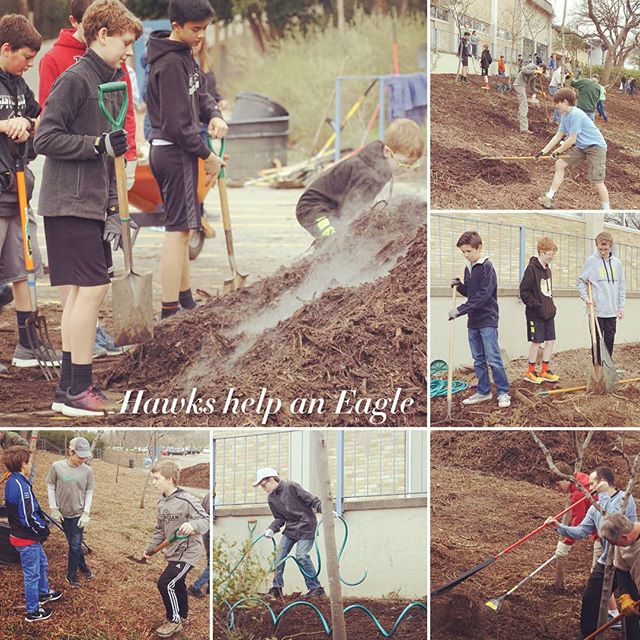From Hawk to Eagle
Photo Credit: Vincent Micheli
May 21, 2018
On February 3rd, I held my Eagle Project at Cistercian. I led a group that planted trees and spread mulch in the large area with the hill in front of the weight room and also on the strip of land before driving up toward the upper parking lot. I started talking with the school in the fall and we made all of the plans in the months leading up to the project day.
Anyone who has done an Eagle project knows that the plan must be detailed and requires that everything is thought out beforehand. Mr. Parker was great to work with, and he helped with all my questions. I was super excited when five trees and two truckloads of mulch were delivered the day of the project.
The two huge piles of mulch were a little intimidating, and after hitting the clay with the first efforts of shoveling a hole for a tree, we realized that five holes might take longer than we thought. However, with the help of sixty-three volunteers throughout the day, and the use of a hand auger and tractor, we were able to finish the project on time.
The project was a great experience. I learned that leading a project takes a lot of planning and patience. I tried to think of questions before getting to the project day, so that I could make sure that everyone knew what they needed to do when they needed to do it. Part of the requirement for the Eagle project is that the Scout cannot do any of the work. They have to organize, coordinate, and lead the project. The biggest lesson that I learned through this was that a leader can only accomplish a big project with the help of others; I would never have been able to complete my project without all of the great help of so many of my classmates, troop members, parents, and neighbors. I really appreciate everyone who helped me!
A lot of people think that as soon as a Scout finishes his Eagle project, he becomes an Eagle Scout, but that isn’t the case. Making Eagle Scout means that the Scout has completed 325 different requirements and gone through the prior ranks: Scout, Tenderfoot, Second Class, First Class, Star, and Life. Each of the Ranks require a list of different achievements, but the Eagle Rank requires the achievement of 13 Eagle merit badges, 8 elective merit badges, troop leadership positions for a minimum of 16 months, and at least 16 hours on different service projects (not including the many hours spent on the Eagle Scout project).
Once all of the requirements are completed, all of the Eagle paperwork has to be submitted. You have to fill out an application with the dates and details of all of the requirements, write an ambition statement (basically a short, two- page paper), get all of the leaders sign-off on the project plan workbook, and complete the Scoutmaster Conference. After that, everything is turned into the Council and they set up an Eagle Board of Review. The Board includes three to six people who read the materials you have turned in and then interview the Scout. At the end of the Review, they decide if the Scout will be approved for Eagle and they sign the application. I was approved for Eagle Rank on March 22. The original application with all of the signatures has to be turned into the Council and they get additional signatures and send it to the National Council who reviews everything and signs all of the paperwork. It normally takes 3 to 6 weeks for the Troop to get an Eagle Packet back. My Eagle Packet was given to my Scoutmaster on April 4th, so thanks to all of the help at Cistercian, I am now a full-fledged Eagle Scout!



